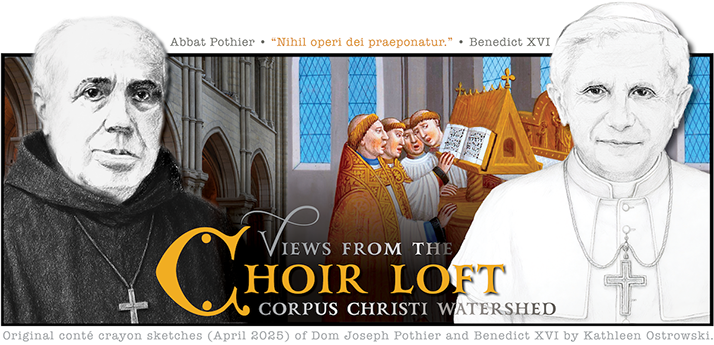 E DON’T KNOW very much about how the Last Supper would have looked. Most scholars believe the Apostles and our Blessed Lord would have been laying down (“reclining”) as they ate. Some scholars have tried to guess how Jewish rituals might have influenced the early Christian rites and “disciplina arcana”—and Father Adrian Fortescue did as well. Because of the words “Postquam cœnatum est,” we know that the chalice our Lord consecrated was the fourth (last) Hallel cup. I am certainly not qualified to add to this type of scholarship in any way.
E DON’T KNOW very much about how the Last Supper would have looked. Most scholars believe the Apostles and our Blessed Lord would have been laying down (“reclining”) as they ate. Some scholars have tried to guess how Jewish rituals might have influenced the early Christian rites and “disciplina arcana”—and Father Adrian Fortescue did as well. Because of the words “Postquam cœnatum est,” we know that the chalice our Lord consecrated was the fourth (last) Hallel cup. I am certainly not qualified to add to this type of scholarship in any way.
Dogs In Church: In spite of what certain internet authors assert, there is much we don’t know about the sacred liturgy even in “modern” times—such as the 16th century. Contemporaneous documents show it was quite common to bring dogs into church at that time. The noisy dog sounds were something prayerful Catholics complained about vociferously. What exactly did that look like? It’s doubtful there would have been silence in the nave of the church—even while complex polyphony was being sung! And people back in those days (who had to work so hard) often smelled bad … which is why incense was used according to some sources. Furthermore, how long did it take the Celebrant to pray the Canon? Examining the length of certain settings (SANCTUS + HOSANNA + BENEDICTUS + HOSANNA), it would seem the priest took a very long time saying the Canon.
Make It Fit Our Times: Therefore, Catholics have always needed to adapt traditional music to the sacred liturgy of the times. In today’s environment—for a variety of reasons—it might be imprudent to attempt a full Renaissance setting of the CREDO, which can easily last 9 minutes or more. Therefore, we are “stealing” something from the Germans. The Germans sing the Creed in plainsong, but switch to polyphony for the “Et Incarnatus Est” section. My choir has been singing Credo VII with added polyphonic sections.
An Example: I don’t like hearing my Soprano voice (I’m a Baritone), but my colleague Keven Smith has encouraged me to continue—so here’s my attempt at a simulation video:
* PDF Download • Credo Extension (Perfect Canon)
—Based off something Father Guerrero published in 1566AD.

Rehearsal videos for each individual voice await you at #62964 .
![]()
Singing Is Physical: There is something I wish I could get across: Singing is physical. A recording device cannot reproduce a choral sound. The piano is a percussive instrument, and can be recorded with greater fidelity than a choir. What I’m trying to say is this: A choral sound is something physical, and microphones cannot capture it. We must form choirs; and this requires a minimum of three singers per part. When just two singers tackle a part, one voice will always dominate the other. You don’t have a choir until you have a minimum of three (3) singers per part. Four soloists singing SATB cannot substitute for an actual choir. Listen to this live hymn recording from last week at our parish and see whether you agree no individual voices “stick out.” Because choral music is physical—I’m talking about the sound waves created—there’s nothing as powerful as hearing a real choir sing in real life, especially if they are in “mixed formation.” I believe that we must form choirs and show priests how an actual choir sounds in real life; only then will we begin to see progress in the realm of Catholic Church music.
You can hear an excerpt of my choir singing that Guerrero Credo extension—but please realize that was the first time we attempted it, and it will improve as we continue to sing it.
P.S. To download a “Credo” image from the 14th century, click here.
![]()

